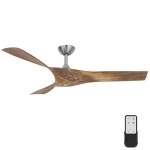Elevating Interiors: The Power of Picture Frames in Wall Decor
Picture frames, when strategically incorporated into wall decor, transcend their basic functionality as protective holders for photographs and artwork. They become integral elements of interior design, capable of transforming the ambiance of a room, reflecting personal style, and narrating visual stories. Understanding the nuances of selecting, arranging, and integrating picture frames into wall decor is crucial for achieving aesthetically pleasing and personalized living spaces. This article explores the multifaceted role of picture frames in wall decoration, examining key considerations for achieving optimal results.
I. Frame Selection: Matching Style and Content
The selection of picture frames is paramount to the overall success of a wall display. The frame should complement both the artwork or photograph it houses and the existing decor of the room. Considerations should include the style, material, color, size, and matting of the frame.
Style Compatibility: Picture frames come in a diverse range of styles, from ornate and traditional to sleek and modern. A classic oil painting might benefit from a gilded or elaborately carved frame that reinforces its historical context. Conversely, a contemporary photograph might be better suited to a minimalist frame with clean lines and a simple design. The key is to ensure that the frame style enhances, rather than detracts from, the artwork's inherent aesthetic.
Material Considerations: The material of the frame influences both its appearance and its durability. Wood frames offer warmth and versatility, making them suitable for various styles. Metal frames, particularly those made of aluminum or steel, provide a contemporary and industrial aesthetic. Other materials, such as acrylic or resin, offer unique visual properties and can be more resistant to moisture or damage. The choice of material should be informed by the environment in which the frame will be displayed and the desired aesthetic effect.
Color Harmony: The color of the frame should be carefully chosen to complement both the artwork and the surrounding wall color. A neutral frame, such as white, black, or natural wood, is often a safe choice, as it can blend seamlessly with various decor styles. However, a bolder color can be used to create a focal point or to draw attention to specific elements within the artwork. Consider using a color that is already present in the artwork to create a sense of visual cohesion. Conversely, using a contrasting color can create a dynamic and eye-catching effect.
Size and Proportion: The size of the frame should be proportional to the size of the artwork. A frame that is too large can overwhelm the artwork, while a frame that is too small can make the artwork appear insignificant. A general rule of thumb is to leave some breathing room around the artwork, typically with a mat. The width of the frame should also be considered; a wider frame can add a sense of grandeur, while a narrower frame can create a more understated look.
Matting: The use of a mat, a border of cardboard or other material placed between the artwork and the frame, can significantly enhance the visual impact of a framed piece. A mat provides a visual buffer between the artwork and the frame, preventing the artwork from appearing cramped. It also helps to protect the artwork from contact with the glass or acrylic of the frame. The color of the mat should be chosen to complement both the artwork and the frame. White or off-white mats are often used to create a clean and neutral look, while darker mats can be used to add depth and contrast.
II. Wall Arrangement: Creating Visual Harmony
The arrangement of picture frames on a wall is crucial for creating a visually appealing and balanced display. Several approaches can be employed, including symmetrical arrangements, asymmetrical arrangements, gallery walls, and floating frames.
Symmetrical Arrangements: Symmetrical arrangements involve arranging picture frames in a balanced and mirrored pattern. This approach is often suitable for formal spaces, such as living rooms or dining rooms, as it creates a sense of order and elegance. A common symmetrical arrangement involves placing two identical frames on either side of a central focal point, such as a fireplace or a piece of furniture. This arrangement can create a sense of balance and harmony in the room.
Asymmetrical Arrangements: Asymmetrical arrangements involve arranging picture frames in a less formal and more organic pattern. This approach is often suitable for more casual spaces, such as bedrooms or home offices. Asymmetrical arrangements can be more visually dynamic and interesting than symmetrical arrangements, but they require careful planning to avoid appearing cluttered or haphazard. One technique is to use frames of different sizes and shapes, but to maintain a consistent color palette or theme. Another technique is to create a focal point by placing a larger frame in a prominent position and then arranging smaller frames around it.
Gallery Walls: A gallery wall is a collection of multiple picture frames arranged together to create a cohesive and visually impactful display. Gallery walls can be either symmetrical or asymmetrical, depending on the desired effect. They can be used to showcase a collection of photographs, artwork, or other memorabilia. A gallery wall is a powerful way to personalize a space and to create a unique focal point. When planning a gallery wall, it is important to consider the overall layout and the spacing between the frames. One approach is to create a grid pattern, with evenly spaced frames. Another approach is to create a more organic and free-flowing arrangement.
Floating Frames: Floating frames, also known as shadow box frames, create a sense of depth and dimension by suspending the artwork or object within the frame. This type of frame is particularly suitable for displaying three-dimensional objects, such as pressed flowers, souvenirs, or small sculptures. Floating frames can add a unique and contemporary touch to a wall display.
Spacing and Alignment: Consistent spacing between frames is essential for creating a cohesive and professional-looking display. The ideal spacing will depend on the size of the frames and the overall size of the wall. A general guideline is to leave between 2 and 4 inches of space between each frame. Alignment is also important. Frames should be aligned either at the top, bottom, or center, to create a sense of order and visual consistency. Use a level to ensure that all frames are hung straight.
III. Integration with Existing Decor: Achieving Cohesion
Picture frames should not be viewed as isolated elements of decor but should be integrated seamlessly with the existing style and color scheme of the room. Considerations include wall color, furniture placement, and overall design aesthetic.
Wall Color Compatibility: The color of the walls serves as the backdrop for the picture frame display and should be carefully considered. A neutral wall color, such as white, gray, or beige, provides a versatile backdrop that can accommodate various frame styles and artwork. However, a bolder wall color can be used to create a more dramatic and impactful effect. If using a bold wall color, choose frames that complement or contrast with the wall color to create visual interest.
Furniture Placement: The placement of furniture can influence the placement and arrangement of picture frames. For example, a large sofa can serve as a natural focal point for a gallery wall. Picture frames can also be used to balance or accentuate the placement of furniture. A tall bookshelf, for instance, can be balanced by placing a vertical arrangement of picture frames on the opposite wall.
Overall Design Aesthetic: Picture frames should align with the overall design aesthetic of the room. In a minimalist space, simple and understated frames are often the best choice. In a more eclectic space, a mix of frame styles and sizes can be used to create a more visually interesting and dynamic display. The key is to ensure that the picture frame display complements the overall style of the room and contributes to a cohesive and harmonious aesthetic.
Lighting Considerations: Proper lighting is crucial for showcasing picture frames effectively. Natural light is often the most flattering, but artificial lighting can also be used to enhance the visual impact of the display. Track lighting or spotlights can be used to highlight specific frames or artworks. Avoid placing picture frames in direct sunlight, as this can cause fading or damage to the artwork. Position picture frames so that they are not overwhelmed by glare or reflections.
Understanding the principles of frame selection, wall arrangement, and integration with existing decor allows for the creation of personalized and aesthetically pleasing living spaces. The careful consideration of these factors transforms what might be a simple collection of framed images into a sophisticated and impactful element of interior design, enhancing the overall ambiance and reflecting individual style.

European Stype Home Design Wedding Love Photo Frame Wall Decoration Wooden Picture Set Fra Decor Frames On

Art Street Set Of 7 Adore Wall Photo Frame Home Office Room Decor White 11x14 8x10 8x6 8x8 5x5 In Buy At Best

Boogie Set Of 8 Elite 3d Wall Photo Frame For Home Décor Frames Art Street

42 Beautiful Ways To Make Gallery Frame Wall For Family Photos Homemydesign Clock Decor

Set Of 10 Individual Wall Photo Frame For Home Decor Size 5x7 6x8 8 Art Street

Frame Metal Wall Art Hanging For Home Decoration

16 Pieces Set Solid Wood Picture Photo Frame Black White

Fall In Love With Designs Home Decor Ideas Frames Inspirations Updates

Inspiration For A Future Picture Frame Wall Home Decor Frames On

Artbyhannah 8 Piece Black Gallery Wall Photo Frame Set Modern Landscape Decor For Home And Office Com
Related Posts







